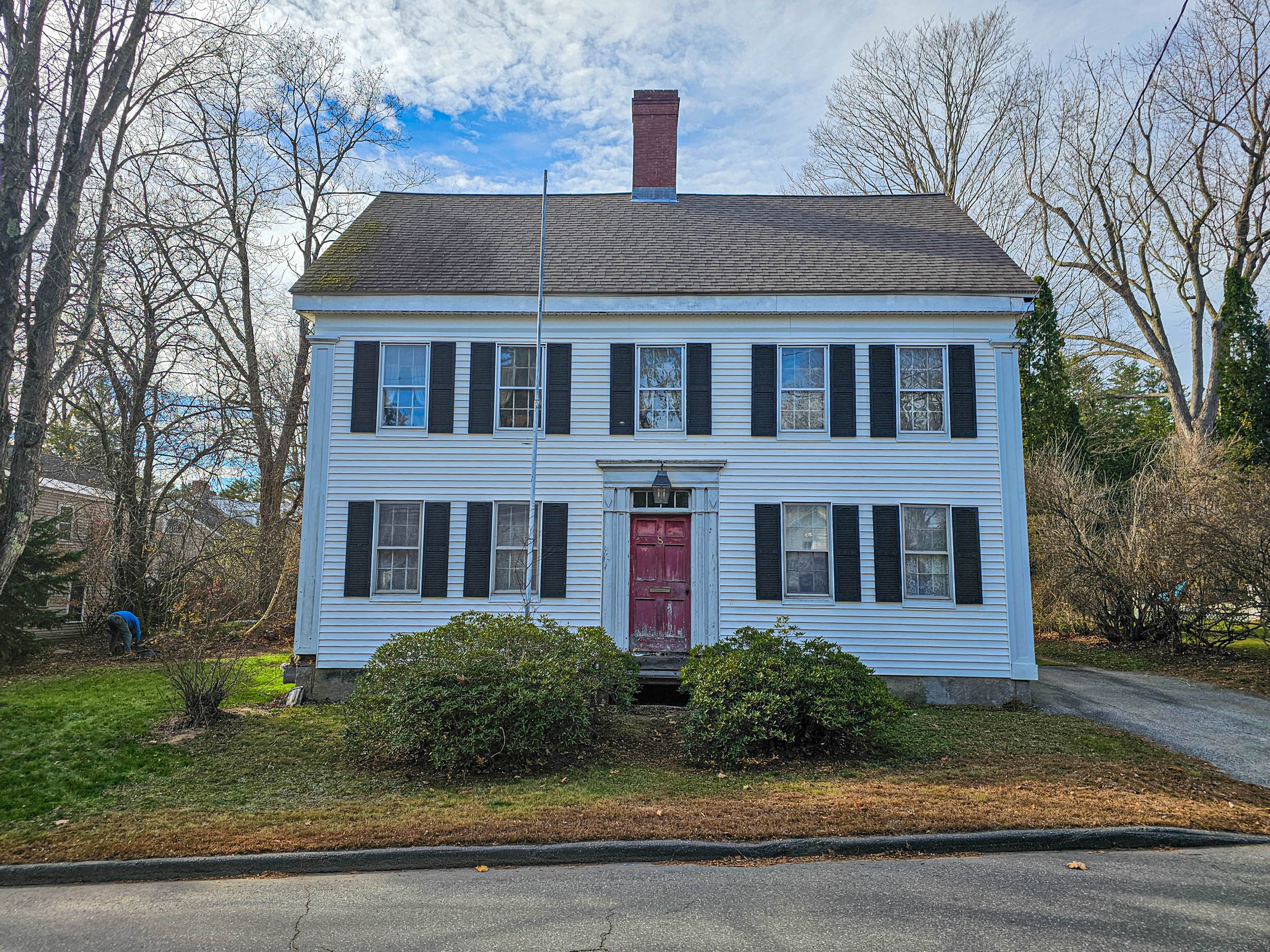Preserving History: The Remarkable Journey of the Whitten House
Standing gracefully in the heart of Topsham, Maine, the Whitten House is more than a residence; it is a story etched in bricks and mortar, embodying the passage of nearly two centuries. Built in 1827, this Federal-style home has been a silent witness to Maine’s changing seasons, its history intricately woven with the community it serves. My stay here was more than just a pause in my digital nomad journey—it was an opportunity to immerse myself in the legacy of a home that has meant so much to so many.
A Living History
The Whitten House carries an aura of historical significance. Initially the private residence of the Whitten family, it became a cherished part of the Topsham community in 1941 when Sarah Whitten donated the property to the town. For more than six decades, the house served as the Whitten Memorial Library, a gathering place and resource for the community. Its stately architecture and unique charm made it a centerpiece of the town’s cultural and intellectual life.

In 2003, the house entered a new chapter when Scott Hanson, an architectural historian, acquired the property. What could have been lost to time was lovingly restored, with Scott meticulously bringing the Whitten House back to its original grandeur. From the carefully recreated 1827 kitchen hearth to the preservation of original plaster walls, every detail speaks to Scott’s dedication to honoring the home’s legacy. His expertise is encapsulated in his book, Restoring Your Historic House, which has become an essential guide for preservationists everywhere.
Stepping Into the Past
Walking through the Whitten House is like stepping into another era. The wide-plank wood floors creak softly underfoot, a gentle reminder of the generations who walked the same paths. The color palette, carefully chosen to reflect period authenticity, invites a sense of calm and continuity. From the detailed woodwork to the expansive windows overlooking the verdant Maine landscape, every element of the house speaks of a time when craftsmanship was both an art and a necessity.

The stories embedded in the Whitten House are as much about its people as its architecture. The Whitten family’s impact on Topsham echoes in the walls, while the library era brought an air of intellectualism and community engagement. Today, the house stands as a bridge between the past and present, a place where history is not just preserved but lived.
A Unique Haven for a Digital Nomad
For me, the Whitten House became not just a dwelling but a workspace and inspiration. As a digital nomad, I have worked in all kinds of spaces, from bustling cafes to serene parks, but the Whitten House offered something truly special—a deep connection to history that sparked creativity. Setting up my workstation in a quiet corner, surrounded by timeless architecture, I felt a profound sense of balance and focus.
The beauty of digital work is its flexibility, and places like the Whitten House remind me why this freedom matters. With mobile technology, we can break away from traditional office environments and find spaces that inspire us. The Whitten House, with its quiet elegance and historical gravitas, provided the perfect backdrop for reflection, creativity, and productivity.
Restored With Love and Passion
Scott Hanson’s restoration efforts deserve special recognition. His approach combines technical expertise with heartfelt care, ensuring that every detail of the Whitten House aligns with its historical integrity. From uncovering original paint colors to salvaging period-specific architectural elements, Scott’s work is as much about storytelling as it is about construction.
His ongoing research into the Whitten family and the house’s role in the community adds even more depth to its legacy. Every artifact and story unearthed enriches the narrative of the house, ensuring that its history continues to be celebrated and understood by future generations.
The Heart of Hospitality
The Whitten House isn’t just a historic structure; it’s a living, breathing home filled with warmth and welcome. Scott and Andrew, my gracious hosts, made my stay unforgettable with their kindness and generosity. From sharing meals to discussing the intricate history of the house, they created an environment that was both comforting and inspiring.

Hospitality at the Whitten House extends beyond creature comforts—it’s about fostering a sense of connection and belonging. The warmth I felt here was a reminder of the power of home, not just as a physical space but as a source of grounding and inspiration.
Reflections on the Whitten House
Living within the Whitten House feels like being suspended between worlds—one deeply rooted in history and another unfolding in the present. Its creaking floors and restored walls are not just remnants of a bygone era; they are guardians of stories, quietly bearing witness to the countless lives that have passed through. As I continue my stay here, I am struck by the realization that this house isn’t just a place—it’s a participant. It holds space for reflection, connection, and creation, offering a haven where the past informs the present and inspires the future.
The Whitten House reminds me that the places we inhabit shape us as much as we shape them. It’s a profound interplay of permanence and change, where the care given to preserve its legacy mirrors the care we must extend to ourselves and the lives we touch. As I work, write, and dream within its walls, I find myself thinking about the stories we leave behind—not just in the places we’ve lived but in the lives we’ve encountered.
Here, in this historic home, I am reminded that every step forward is tethered to something greater. The Whitten House doesn’t just invite you to marvel at its history; it challenges you to reflect on the kind of legacy you want to create. What stories will your walls hold? What moments will be etched into the spaces you leave behind? These are the thoughts that linger as I look out at the Maine landscape from the very rooms where countless others have stood before me, contemplating their own journeys.
What role do you think historic preservation plays in maintaining the cultural fabric of a community?

